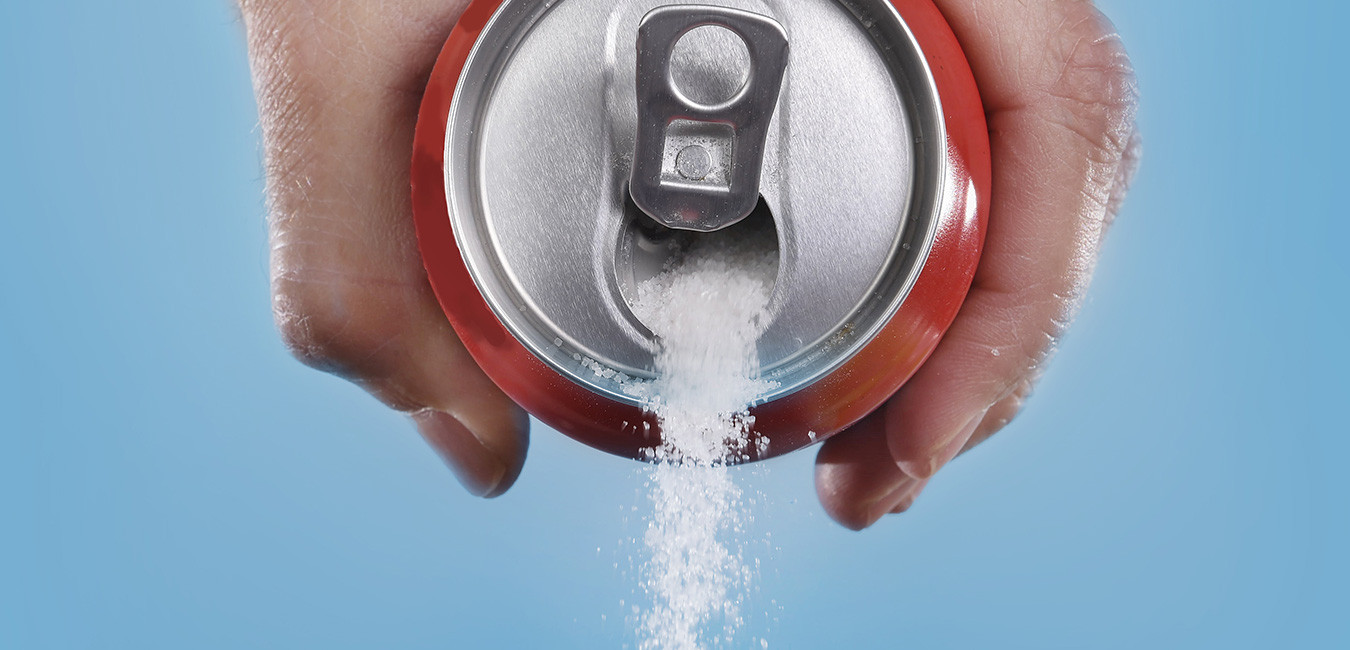There’s no question that an excess of sugar in the American diet is one of many lifestyle contributors in the obesity epidemic. What’s most alarming is the growing link between excess sugar and abdominal fat, visceral fat, low HDL and elevated triglycerides, not to mention risk of heart disease and diabetes.
Back in 2010, as a response to the growing body of research linking excess sugar to the development of heart disease, the American Heart Association issued a new scientific statement on dietary sugars and cardiovascular health. The AHA urged Americans to slash their sugar intake – and by a lot. The new target is 100 calories a day of added sugar for women and 150 calories a day for men. This is about 6 ½ teaspoons of sugar each day for a woman; 9 ½ teaspoons a day for men (note: one 12-ounce can of regular soda contains 10 teaspoons of sugar). Keep in mind that most estimates place added calories from sugar at 350 to 475 calories a day for most Americans.
Without question the intake of sugar-sweetened beverages for the average American has skyrocketed since the 1970’s. However, added sugars have become a predominant feature in many packaged foods in the market today–especially cereals, snacks, candies and desserts. And their availability is higher than ever before.
Second to the fact that too much sugar just really isn’t good for our health, added sugars are crowding out other healthy foods that people would (or should) otherwise be eating. What’s more, even if an individual is eating the recommended amount of fruits, vegetables and whole grains, most people simply can’t afford the additional calories high-sugar foods provide.
As practitioners, tossing in guidelines on added sugars in addition to the plethora of information you are already dispensing can seem daunting. We’ve put together a few key tips to help you share a few “sugar cutting” sound bites with your patients:
- Eliminate ALL regular sodas, fruit “drinks” and other sugar-sweetened beverages.
- Focus on limiting added sugars (not naturally occurring sugars), especially in packaged/boxed foods. Limit foods that contain any of the following ingredients: high-fructose corn syrup, corn syrup, cane or beet sugar, maple syrup, molasses, evaporated cane juice, brown rice syrup, brown sugar, glucose or dextrose, fructose, fruit juice concentrates, agave syrup or nectar, and honey.
- Don’t worry about the naturally occurring sugar in milk, plain yogurt and fresh fruit.
- Choose unsweetened varieties of almond, soy, rice or coconut milk.
- Cut out table sugar (white sugar), syrup, honey and brown sugar from the table. Experiment with recipes and try to cut back where possible.
- Try cutting the usual amount of sugar you add to foods by half and wean down from there, or consider using an artificial sweetener.
- Drink more water, black coffee, unsweetened tea. Consider sugar-free or low-calorie beverages.
- Instead of adding sugar to cereal or oatmeal, add fresh or dried fruit.
- Eat fresh, whole fruits. Avoid fruit canned in syrup, and frozen fruit with sugar added.
- Substitute unsweetened applesauce for sugar in recipes (use equal amounts).
- Limit total amount of packaged convenience foods you purchase. If you consume more whole, minimally processed foods like fresh fruits, vegetables, nuts and seeds and plain yogurt, the amount of sugar consumed will be cut considerably.
- Consider non-nutritive (and calorie-free) sweeteners such as aspartame, sucralose or saccharin in moderation.
- When reading food labels, try and keep the total sugar to 4 grams or less per serving.
It will take some time and perseverance, your patients can successfully cut back added sugars. Encourage food label reading, making meals at home versus dining out, and choosing minimally processed foods and their heart health will benefit beyond just cutting out the added sugar.

